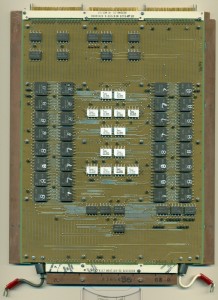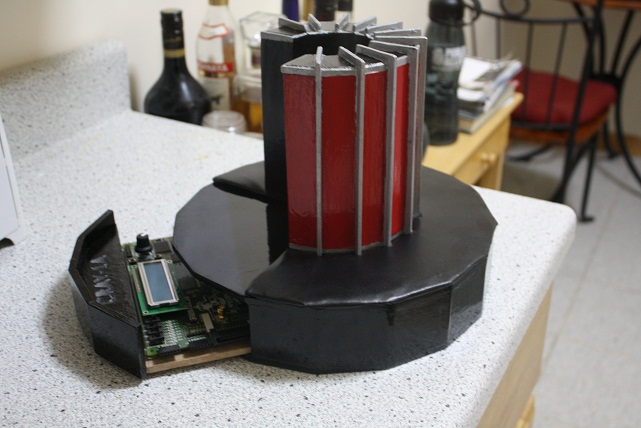Homebrew Cray-1A – 1976 vs 2010
In 1976 the fasted normal processor ran at around 5MHz (such as the RCA 1802). Personal computers really hadn’t been thought of, and mainframes were massive. It was then that Seymour Cray decided to build a Super Computer. A computer that would be better and faster then most anything that existed at the time.
The Cray-1 ran at a blistering 80MHz, and could work with a staggering 32MB of memory. This performance was not achieved in personal computers until the 1990’s. No single processor of 1976 could attain these speeds so Cray designed his own. Only 4 different types of ICs were used in the Cray-1 (2 types of quad-NAND gates and 2 types of SRAM) All of the logic was ECL (Emitter Coupled Logic) which was very fast, very power hungry, and produced a lot of heat. In all the Cray-1 used some 200,000 gates, many of which were solely used to add timing delays to make sure signaling did not generate standing waves or switching noise.
Recently a man by the name of Chris Fenton decided to make a 1/10th WORKING scale model of the Cray-1A. This is no small feat, there is not a lot of surviving documentation for the Cray, nor is there much of any software left (they were mostly retired from service by 1990). Chris wished the Cray-1 to physically look like the Original (including the padded bench seat) as well as be binary code compatible. His implementation runs at 33MHz on a Xilinx Spartan-3E 1600 CPLD. Basically this is a dev board with a chip that has a complex array of programmable logic that you can program to do what you want. In this case 1.6 million gates, about 1.2 Million of which are used in the design, significantly more the the original.
The original Cray weighed in at 5.5 tons with the cooling system, and drew around 30kW of power. The 1/10th scale? will run on a few batteries. Supercomputers are still an important part of computing, but as vector processing expands (what the Cray was orginally diesgned for) such things as graphics cards can be used to perform much of the tasks of a supercomputer, and do so faster and cheaper.
Regardless, when people think of a Super Computer, they think of the Cray



